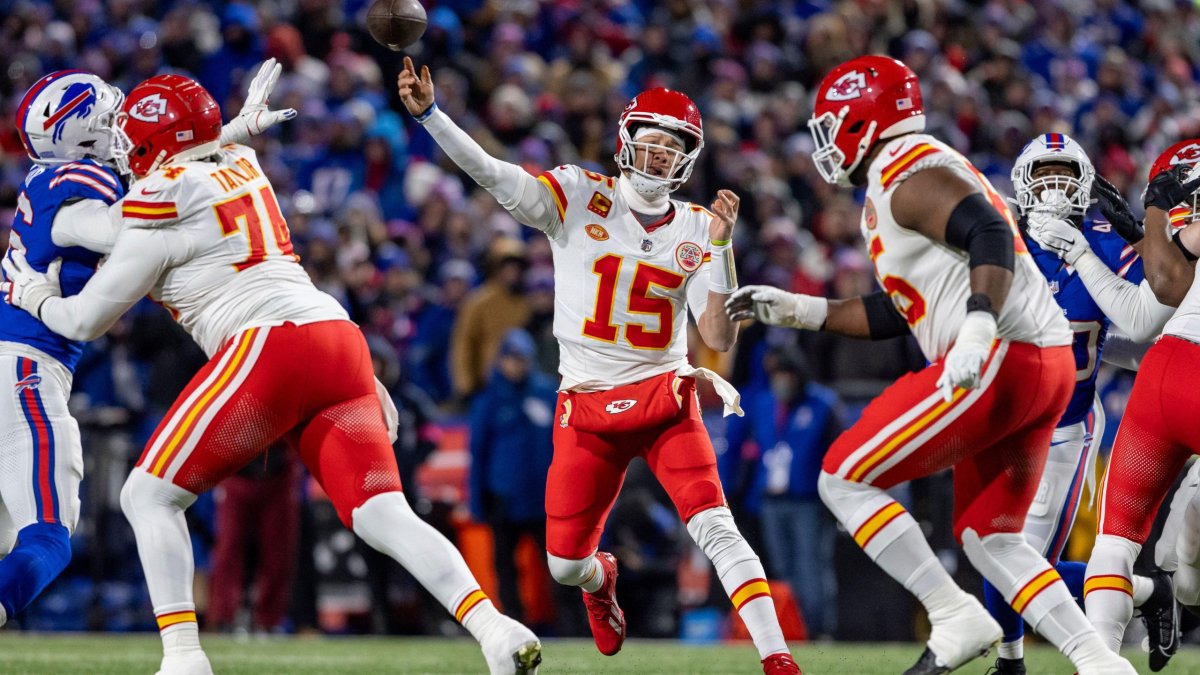Introduction
The Super Bowl is the championship game of the National Football League (NFL) and one of the most anticipated annual sporting events in the United States. Every year, millions of viewers from around the world tune in to watch this spectacular culmination of the NFL season. While football fans love the game for its strategic plays, intense competition, and high-energy atmosphere, the Super Bowl has become much more than just a football game. It is a massive cultural phenomenon, blending sports, entertainment, and commercial spectacle into a single, unmatched event.
From its humble beginnings in 1967 to the extravagant production it has become today, the Super Bowl has transcended the boundaries of sports. It is now a showcase for the best football teams in the league, world-class musical performances, and the biggest brands looking to make a splash with their advertisements. It’s an event where records are broken, legacies are made, and traditions are born. As we explore the multifaceted dimensions of the Super Bowl, it becomes clear why this event remains a cornerstone of American sports culture.
The History Of The Super Bowl
The Super Bowl was first played in 1967 as part of a merger agreement between the NFL and its then-rival, the American Football League (AFL). The idea was to have the champions of the two leagues face off in a single, decisive game. This first championship, known as the AFL-NFL World Championship Game, eventually became the Super Bowl. The name “Super Bowl” was inspired by college football’s famous bowl games and has stuck ever since.

Over the years, the Super Bowl has grown exponentially in size, prestige, and cultural relevance. While the first few games had relatively modest viewership and media coverage, it didn’t take long for the Super Bowl to become a must-watch event. The merger of the AFL and NFL in 1970 solidified the game’s status as the ultimate championship in professional American football. As the NFL expanded its fan base, the Super Bowl became a globally recognized event, celebrated for its drama, star players, and high-stakes competition.
One of the key aspects of the Super Bowl’s rise in popularity has been its ability to produce memorable moments. Whether it’s a last-minute touchdown, a game-winning field goal, or a jaw-dropping halftime show, the Super Bowl delivers iconic memories year after year. It has seen legendary performances from players like Joe Montana, Tom Brady, Jerry Rice, and many others. Each new game adds another chapter to the rich history of the Super Bowl, a history that football fans and analysts alike study with admiration.
The Teams And Rivalries That Define The Super Bowl
One of the most exciting aspects of the Super Bowl is watching the top teams in the NFL face off for the championship. Over the years, some franchises have become synonymous with Super Bowl success. The Pittsburgh Steelers, Dallas Cowboys, San Francisco 49ers, and New England Patriots are among the teams that have built legacies on their Super Bowl performances.
The Patriots, led by coach Bill Belichick and quarterback Tom Brady, have been particularly dominant in recent decades. With six Super Bowl titles, the Patriots have established themselves as one of the most successful dynasties in NFL history. Meanwhile, the Pittsburgh Steelers, with their famous “Steel Curtain” defense, have also claimed six titles, making them one of the most storied franchises in the league.
Rivalries between teams can also elevate the intensity of a Super Bowl. While the Super Bowl itself is a standalone game between two conference champions, the broader rivalries in the NFL often add layers of meaning to the matchup. For example, when the New York Giants faced off against the New England Patriots in Super Bowl XLII, the narrative was heightened by the fact that the Patriots were on the verge of completing an undefeated season. The Giants’ upset victory not only denied the Patriots perfection but also became one of the most talked-about games in Super Bowl history.
The Road To The Super Bowl: Playoff Drama
The Super Bowl is the culmination of a long and grueling NFL season, but it’s the playoffs that set the stage for the grand finale. The NFL playoffs are structured as a single-elimination tournament, meaning that teams must win every game to advance. This high-stakes format ensures that every game is filled with drama and tension. From the Wild Card Round to the Conference Championships, each game brings teams one step closer to their Super Bowl dreams.
The playoff system creates memorable matchups, as the best teams from both the American Football Conference (AFC) and the National Football Conference (NFC) battle for the right to represent their conference in the Super Bowl. Upsets are common, as lower-seeded teams sometimes ride a wave of momentum to reach the championship game. The “Cinderella story” is a familiar theme in Super lore, where underdog teams overcome the odds to make a deep playoff run and even claim the championship.
One of the most exciting elements of the playoff system is the unpredictability. While teams like the Patriots and 49ers have historically been dominant, there are plenty of examples of surprise Super Bowl contenders. In recent years, teams like the Philadelphia Eagles and the Kansas City Chiefs have emerged as Super Bowl champions after seasons that saw them start as long shots. The nature of the playoffs means that any team can make a run at the title, adding to the excitement and allure of the Super Bowl.
The Halftime Show: A Spectacle Beyond Football
While the Super Bowl is primarily a football event, the halftime show has become a major draw for viewers, often attracting those who may not be as interested in the game itself. The Super Bowl halftime show has evolved into a spectacle of music, dance, and visual effects, with some of the biggest names in the entertainment industry taking the stage. From Michael Jackson’s groundbreaking performance in 1993 to Beyoncé’s electrifying show in 2013, the halftime show has produced unforgettable moments that transcend the sport.
The importance of the halftime show cannot be overstated in terms of the Bowl’s cultural impact. It is a platform for artists to perform in front of a global audience, often resulting in career-defining performances. In addition to the music, the production value of the show has reached new heights over the years. Elaborate stage setups, pyrotechnics, and cutting-edge technology have become standard features of the halftime performance, making it a must-see event for millions of viewers.
The halftime show also reflects broader trends in pop culture, as the NFL often selects artists who are at the height of their popularity. In recent years, performers like Lady Gaga, The Weeknd, and Shakira have taken the stage, delivering performances that were widely discussed and dissected in the media. The halftime show’s ability to capture the attention of both sports fans and the general public is a testament to its significance as a cultural event.
Super Bowl Commercials: The Most Expensive Airwaves
Another key aspect of the Super Bowl’s cultural significance is the commercials. In fact, for some viewers, the commercials are just as important as the game itself. The Super Bowl offers advertisers a unique opportunity to reach one of the largest audiences in television history, and brands spare no expense to make their ads stand out. Over the years, Super Bowl commercials have become known for their creativity, humor, and high production values.
The cost of airing a commercial during the Super has skyrocketed as the game’s viewership has grown. Companies are willing to pay millions of dollars for just 30 seconds of airtime, knowing that their ad will be seen by tens of millions of people. This high price tag has led to some of the most iconic commercials in television history, including memorable campaigns from brands like Coca-Cola, Budweiser, and Apple.
What sets Super Bowl commercials apart is the expectation that they will be more than just traditional advertisements. Viewers expect Super Bowl ads to be funny, clever, and sometimes even emotional. Many companies use the opportunity to debut new products or promote special campaigns, adding to the anticipation surrounding the commercials. In recent years, some brands have even released teaser trailers for their Super Bowl ads, building hype in the weeks leading up to the game.
The Economic Impact Of The Super Bowl
The Super Bowl is more than just a sporting event; it’s an economic powerhouse. The game generates billions of dollars in revenue, not only for the NFL but also for the host city, advertisers, and various industries associated with the event. Hosting the Super Bowl is a significant boon for cities, as it brings in tourists, boosts local businesses, and increases media exposure. Hotels, restaurants, and other service industries see a surge in business as fans flock to the host city for Bowl week.

In addition to the local economic impact, the Super Bowl has become a major driver of television advertising revenue. Companies are willing to invest heavily in Super ads because they know the event draws one of the largest television audiences of the year. The game consistently ranks as one of the most-watched broadcasts in the United States, making it a prime opportunity for advertisers to reach a broad and engaged audience.
The Super Bowl also impacts the retail sector, as fans purchase merchandise, snacks, and other game-day essentials. From team jerseys to flat-screen TVs, consumer spending spikes in the lead-up to the game. The Super Bowl has essentially become a national holiday, with parties, gatherings, and viewing events taking place across the country. This widespread celebration contributes to the economic ripple effect of the game, making it a key date on the calendar for many businesses.
The Cultural Significance Of The Super Bowl
The Super Bowl’s cultural significance extends far beyond the world of football. It has become a symbol of American culture, representing the intersection of sports, entertainment, and commerce. For many, the Super is a shared experience that brings people together, whether they are die-hard football fans or casual viewers. It’s a day when friends and families gather to watch the game, enjoy good food, and participate in the excitement of the event.
The Super Bowl also serves as a reflection of broader societal trends. The commercials, halftime show, and even the game itself often mirror the values and interests of the American public. For example, the inclusion of diverse musical acts in recent halftime shows highlights the growing emphasis on representation and inclusivity in entertainment. Similarly, the commercials often address social issues or incorporate themes that resonate with the current cultural climate.
In many ways, the Super Bowl has become a cultural touchstone, marking the passage of time and creating a sense of continuity in American life. Each year, the game provides a moment for reflection, celebration, and entertainment, making it a tradition that transcends generations. The Bowl is not just about the teams on the field or the final score; it’s about the collective experience of watching, discussing, and remembering the event.
Super Bowl MVPs: The Stars Of The Show
One of the most prestigious honors in football is being named the Super Bowl Most Valuable Player (MVP). The Super Bowl MVP award is given to the player who delivers an outstanding performance in the championship game, often leading their team to victory. Over the years, some of the greatest players in NFL history have earned this honor, solidifying their place in the sport’s lore.
Quarterbacks have historically dominated the MVP award, with legends like Joe Montana, Tom Brady, and Peyton Manning each winning the title multiple times. However, other positions have also shined in Bowl moments, from wide receivers to defensive players. For example, wide receiver Jerry Rice and linebacker Von Miller both had standout performances that earned them the MVP award in their respective Super Bowl victories.
The MVP award not only recognizes individual excellence but also serves as a reminder of the importance of teamwork. While one player may receive the award, the success of the team is always a collective effort. The MVP’s performance is often a reflection of their ability to rise to the occasion in the most important game of the year, demonstrating poise, skill, and leadership under immense pressure.
The Future Of The Super Bowl
As the Super continues to evolve, there are many questions about what the future holds for this iconic event. With advancements in technology, the viewing experience is likely to become even more immersive, with features like virtual reality and enhanced streaming options. The integration of sports betting, which has become legal in many states, could also add new dimensions to the way fans engage with the game.
Additionally, the NFL faces challenges in ensuring the safety of players, particularly with regard to issues like concussions and long-term health effects. As player safety becomes a more prominent concern, the league may need to adjust its rules or adopt new technologies to protect athletes while maintaining the physicality that makes football so exciting.

Conclusion
The Super Bowl is also likely to continue expanding its global reach. While the game is already broadcast to millions of viewers worldwide, there is potential for further growth in international markets. As American football gains popularity in countries like the United Kingdom, Germany, and Mexico, the Super Bowl could become an even more significant event on the global sports calendar.
Ultimately, the Bowl’s future will be shaped by its ability to adapt and innovate while staying true to the traditions that have made it so beloved. Whether through new technologies, changing cultural trends, or the emergence of new football dynasties, the Super Bowl will remain a defining feature of American sports and a must-watch event for fans around the world.











